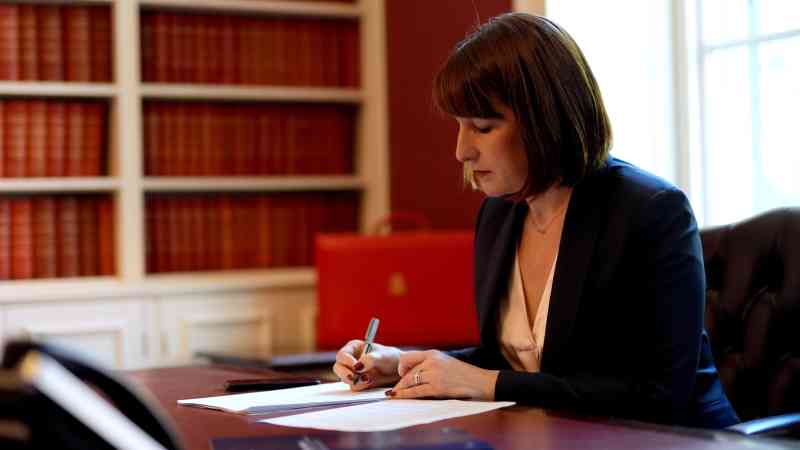UK borrowing overshoots as debt hits 100% of GDP
National debt hit 100 per cent of GDP for the first time since the 1960s after the government’s borrowing bill in August overshot forecasts.
Official figures, which will pile pressure on the chancellor before Labour’s first budget on October 30, showed that public sector net borrowing was £13.7 billion last month, higher than the £11.2 billion projected by the Office for Budget Responsibility, the independent fiscal watchdog.
The government’s borrowing bill was driven up last month by spending on benefits, linked to an uprating in line with inflation, and expenditure on other government running costs.
The cost of servicing the UK’s debt fell, however, by £100 million to £5.9 billion in August, the fourth consecutive month of declines caused by a fall in the retail price index measure of inflation. The government also collected more tax receipts last month, compared with the same period last year, after VAT, income tax and corporation tax receipts all rose.
National insurance contributions fell because of a cut to the rate introduced by the last government, the ONS said.
Labour have said they will raise none of these tax rates, which account for more than two thirds of the government’s revenues.
The UK’s overall borrowing bill has overshot forecasts for the past three months and is running about £7 billion higher than forecasts in the fiscal year beginning in April. Since entering government in July, Labour have warned of a “black hole” of £22 billion for spending needs this year left by the previous government.
Rachel Reeves, the chancellor, was handed a £10 billion boost, however, in her attempts to meet her fiscal rule at the autumn budget, when the Bank of England said it would be selling fewer bonds back to the markets, temporarily reducing losses that are covered by cash transfers from the Treasury.
In March the OBR assumed the Bank would make losses on £48 billion of gilts it was selling to the market in the following fiscal year, an amount that has been reduced to £13 billion in the Bank’s latest quantitative tightening decision taken on Thursday. The shift could grant the government £10 billion in extra fiscal headroom, according to figures from Goldman Sachs.
The debt ratio has provisionally hit 100 per cent of GDP in the past but the figures have since been revised. The ONS cautioned in today’s data: “Our estimate of debt as ratio of GDP in the most recent months is highly provisional and is likely to be revised in future publications. This is because it partly relies on GDP estimates based on the March 2024 Office for Budget Responsibility forecast.”




Post Comment